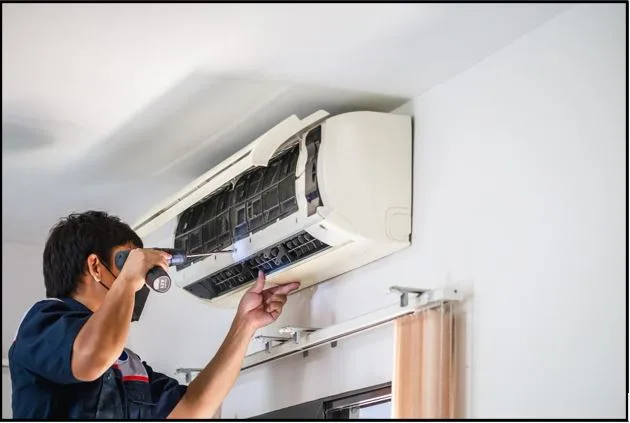The Hidden Costs of Delaying AC Repairs in San Antonio
When your cooling system falters in the scorching Texas heat, putting off a call for AC Repair in San Antonio may seem convenient. Yet that decision can trigger a cascade of expenses soaring energy bills, emergency fees, major breakdowns, and even health hazards. In this guide, we’ll reveal the true price of procrastinating on AC fixes and show you how timely service preserves both comfort and budget.
Increased Energy Bills
Postponed repairs often force your air conditioner to work harder to cool the same space.
- A dirty evaporator coil or low refrigerant raises power draw by up to 20%.
- Longer run times translate directly into higher monthly utility statements.
By addressing minor issues early, you avoid compounding inefficiencies that jack up kilowatt-hour consumption.
How Inefficient Cooling Drives Up Power Consumption
When airflow restrictions or mechanical wear restrict heat exchange, the compressor and fans stay on longer. This extended runtime can elevate your electric usage by hundreds of dollars annually.
Risk of Major System Failures
A small fault today can evolve into a catastrophic breakdown tomorrow.
- Worn bearings or loose belts lead to motor burnout.
- Refrigerant leaks left unchecked harm both performance and compressor integrity.
Minor part replacements cost a fraction of a full system swap.
Timeline of Breakdown Progression
- Strange noises and uneven cooling
- Reduced efficiency and short cycling
- Compressor lock-ups or coil ruptures
- Complete system replacement
When you skip tune-ups, you fast-track this deterioration.
Repair vs Replacement Costs Comparison
| Repair Type | Typical Cost Range | Risk if Delayed |
| Refrigerant Recharge | $200 – $500 | Compressor damage, leak spreads |
| Motor or Fan Assembly | $300 – $800 | Overheated system, electrical hazards |
| Evaporator/Condenser Coil | $400 – $1,200 | Coil corrosion, costly full-unit replacement |
| Full System Replacement | $4,000 – 10,000 | Only solution after critical component failure |
Impact on Indoor Air Quality and Health
Beyond dollars and cents, faulty ACs jeopardize air purity, risking mold growth, humidity spikes, and allergen buildup.
- Clogged filters foster dust and microbial colonies.
- Excess moisture invites mold along ductwork.
These conditions can aggravate asthma, allergies, and respiratory infections—especially dangerous for young or elderly residents.
Mold Growth and Allergens
Hidden leaks and stagnant condensate often go unnoticed until a mold odor arises. Early detection through regular inspections ensures cleaner airflow and healthier indoor environments.
Emergency Service Premiums
When a system fails in the dead heat of summer, 24/7 emergency calls can carry hefty premiums.
- Off-hour or weekend dispatch fees range from $100 to $250.
- Rush jobs may incur overtime labor rates.
Scheduling routine inspections during normal business hours keeps your repair costs predictable and avoids steep “after-hours” surcharges.
Understanding After-Hours Charge Structure
Technicians often bill time-and-a-half or double time for services outside standard windows. Emergency calls for holiday or late-night fixes can inflate your invoice by 30–50%.
Reduced Lifespan of AC Units
Every time a unit labors under a defect, it shortens its usable life.
- Heat exchanger stress accelerates wear on internal components.
- Low refrigerant leads to compressor overheating.
A well-maintained AC can last 15–20 years, whereas neglected units often fail within 8–10 years.
Long-Term Performance Decline
Ignoring minor issues initiates a “death by a thousand cuts.” Bearing friction, refrigerant scarcity, and electrical surges contribute to premature system retirement.
Preventative Maintenance vs Delayed Repairs
Routine tune-ups cost a fraction of repair emergencies.
- Annual maintenance plans typically run $150–$300.
- Inspections include filter changes, refrigerant checks, and safety tests.
By catching early warning signs, you avoid both breakdowns and the five hidden costs we’ve covered so far.
Maintenance Plan Benefits
| Feature | Benefits |
| Biannual Precision Tune-Ups | Early fault detection, improved efficiency |
| Priority Scheduling | Faster response, no emergency premiums |
| Discounted Repair Rates | Lower parts and labor costs |
| System Performance Reports | Transparent insight into AC health |
When to Schedule AC Repairs
As a leading HVAC Company in San Antonio, we recommend scheduling service at the first sign of reduced airflow, odd sounds, or rising energy bills. A quick diagnostic can save up to 60% of potential future repair expenses.
- Noticeable temperature imbalances across rooms
- Unusual odors, moisture, or noise from vents
- Increased runtime without reaching setpoint
Early intervention keeps small faults from ballooning into budget-busting breakdowns.
Conclusion
Delaying AC repairs in San Antonio carries hidden costs far beyond a simple service fee, escalating energy bills, health hazards, emergency premiums, and shortened equipment life. By opting for prompt diagnostics and fixes, you protect your comfort, indoor air quality, and wallet. For trusted, professional service, contact Apollo Air Heating & Cooling. We’re your go-to HVAC Company in San Antonio and ready to keep you cool all summer long. Visit for more details.
Frequently Asked Questions
1: How quickly should I address strange noises from my AC?
Any new grinding, squealing, or banging warrants service within 24–48 hours to prevent motor failures.
2: Can a low refrigerant level be a DIY fix?
No. Refrigerant handling requires certified technicians; attempting DIY recharges can cause leaks or environmental harm.
3: How often should I get routine AC maintenance?
Schedule professional inspections at least once per cooling season, ideally in spring before peak usage.
4: Will regular filter changes reduce repair needs?
Yes. Swapping filters every 1–3 months cuts dust buildup and airflow restrictions, minimizing strain on components.
5: What’s the sign that my AC needs full replacement?
When repair costs exceed half the price of a new unit or your system is over 15 years old, replacement often delivers better value.





